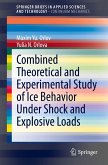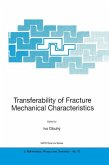Wood offers several advantages over other materials used in construction. In Brazil, ABNT NBR 7190:2022 specifies testing procedures for determining physical and mechanical properties, but these tests generally require specialized and costly facilities. The standard also provides empirical ratios relating parallel-to-grain shear strength to parallel-to-grain compressive strength. This study brings light to those relationships using results from compression and shear tests parallel to the grain on ten hardwood species, analyzed by least-squares regression. The fitted coefficients were then compared with the values given in ABNT NBR 7190 (2022). For the combined dataset across all species, the largest coefficient obtained was 86.4% higher than the corresponding code value. Regarding how these ratios vary with strength class, the authors found no prior study demonstrating the decrease in the highest coefficients with increasing class that ABNT NBR 7190 (2022) describes, indicating another point of divergence from the standard.
Bitte wählen Sie Ihr Anliegen aus.
Rechnungen
Retourenschein anfordern
Bestellstatus
Storno








